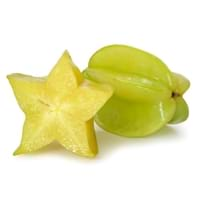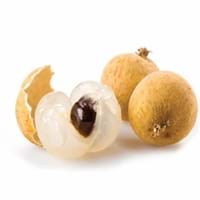Health Benefits
Cancer prevention, Heat stroke treatment
Anti depressant, Anti-inflammatory properties, Healthy mucus membrane, prevents oral cavity cancer, Prevents anemia, Prevents cases of morning sickness, Prevents lung cancer, Skin rejuvenation, Treatment of colonic diseases
General Benefits
Anti oxidant properties, Anti-inflammatory properties, Digestive aid, Maintains healthy cholesterol level, Treatment of sore eyes
Anti oxidant properties, Anti-inflammatory properties, Digestive aid, Gives you energy, Suppresses Arthritis
Skin Benefits
Anti-aging benefits, Heals sunburn, Skin rejuvenation
Reduces wrinkles, Skin rejuvenation
Hair Benefits
Promotes longer and healthier hair, Protects hair
Not Available
Allergy Symptoms
NA
Itching, Swelling of mouth, tongue or lips, Tingling sensation in mouth
Side Effects
Nausea, Vomiting
Mouth irritation, Weight gain
Best Time to Eat
As a snack in the late afternoon, Eat the fresh ones, avoid mixing with any other foods, don't eat after meal., Strictly avoid empty stomach
As a snack in the late afternoon
Vitamin B5 (Pantothenic Acid)
Vitamin C (Ascorbic Acid)
Vitamin E (Tocopherole)
Not Available
Vitamin K (Phyllochinone)
Not Available
Lutein+Zeaxanthin
Not Available
Calories in Fresh Fruit with Peel
Calories in Fresh Fruit without Peel
Not Available
Not Available
Calories in Frozen Form
Not Available
Not Available
Calories in Dried Form
Not Available
Calories in Canned Form
Not Available
Not Available
Calories in Pie
Not Available
Type
Tree fruit
Tree fruit, Tropical
Season
Autumn, Spring, Summer
Mid to late summer
Varieties
King, Bell, Sri Kembangan, Arkin and Fwang Tung
Chompoo Longan, Kohala Seedling, Haew, Edau and Biew Kiew
Seedless Variety
No
Not Available
Color
Golden yellow, Green
Rusty brown
Inside Color
Yellowish Green
Yellowish brown
Shape
Oval and Star(Cross section)
Round
Taste
Crisp, Juicy, Sweet
Sweetish
Grows on
Not Available
Trees
Soil Type
Loam, Well-drained
Well-drained
Climatic Conditions
Moist, Warm to hot climate
Sunny, Warm, Without frosts
Facts about
- When carambola is cut horizontally, it forms a star.
- It is believed that carambola helps to cure hangover.
- Entire carambola is edible, including its skin.
- 2 varieties of carambola are cultivated: tart & sweet.
- Longan is also called as "Dragon's eye" in China as it gives an impression of an eyeball.
- Longan seeds can be used to absorb the venom after the snake bite and they also help to stop bleeding.
Top Producer
Taiwan
Thailand
Other Countries
Australia, Guyana, India, Israel, Malaysia, Philippines, United States of America
Australia, Combodia, Taiwan, United States of America, Vietnam
Top Importer
Europe
China
Top Exporter
Malaysia
Thailand
Botanical Name
Averrhoa carambola
Dimocarpus longan
Synonym
Not Available
Dragon eye
Subkingdom
Tracheobionta
Viridiplantae
Division
Magnoliophyta
Tracheophyta
Class
Magnoliopsida
Magnoliopsida
Order
Oxalidales
Sapindales
Family
Oxalidaceae
Sapindaceae
Genus
Averrhoa
Dimocarpus
Species
A. carambola
D. longan
Generic Group
Not Available
Not Available
Difference Between Carambola and Longan
We might think that Carambola and Longan are similar with respect to nutritional value and health benefits. But the nutrient content of both fruits is different. Carambola and Longan Facts such as their taste, shape, color, and size are also distinct. The difference between Carambola and Longan is explained here.
The amount of calories in 100 gm of fresh Carambola and Longan with peel is 31.00 kcal and 83.00 kcal and the amount of calories without peel is Not Available and Not Available respectively. Thus, Carambola and Longan belong to and category.These fruits might or might not differ with respect to their scientific classification. The order of Carambola and Longan is Oxalidales and Sapindales respectively. Carambola belongs to Oxalidaceae family and Longan belongs to Sapindaceae family. Carambola belongs to Averrhoa genus of A. carambola species and Longan belongs to Dimocarpus genus of D. longan species. Beings plants, both fruits belong to Plantae Kingdom.









